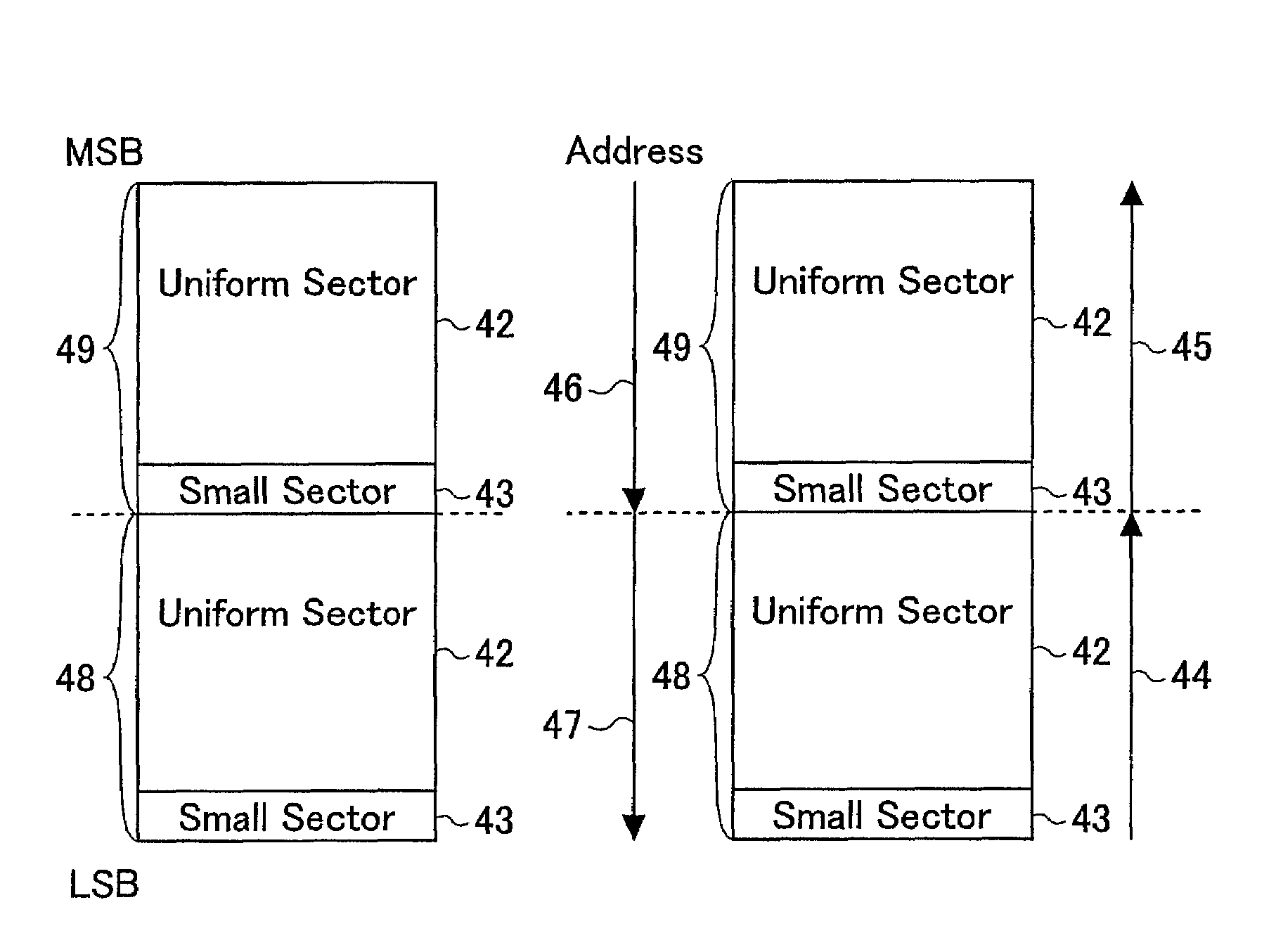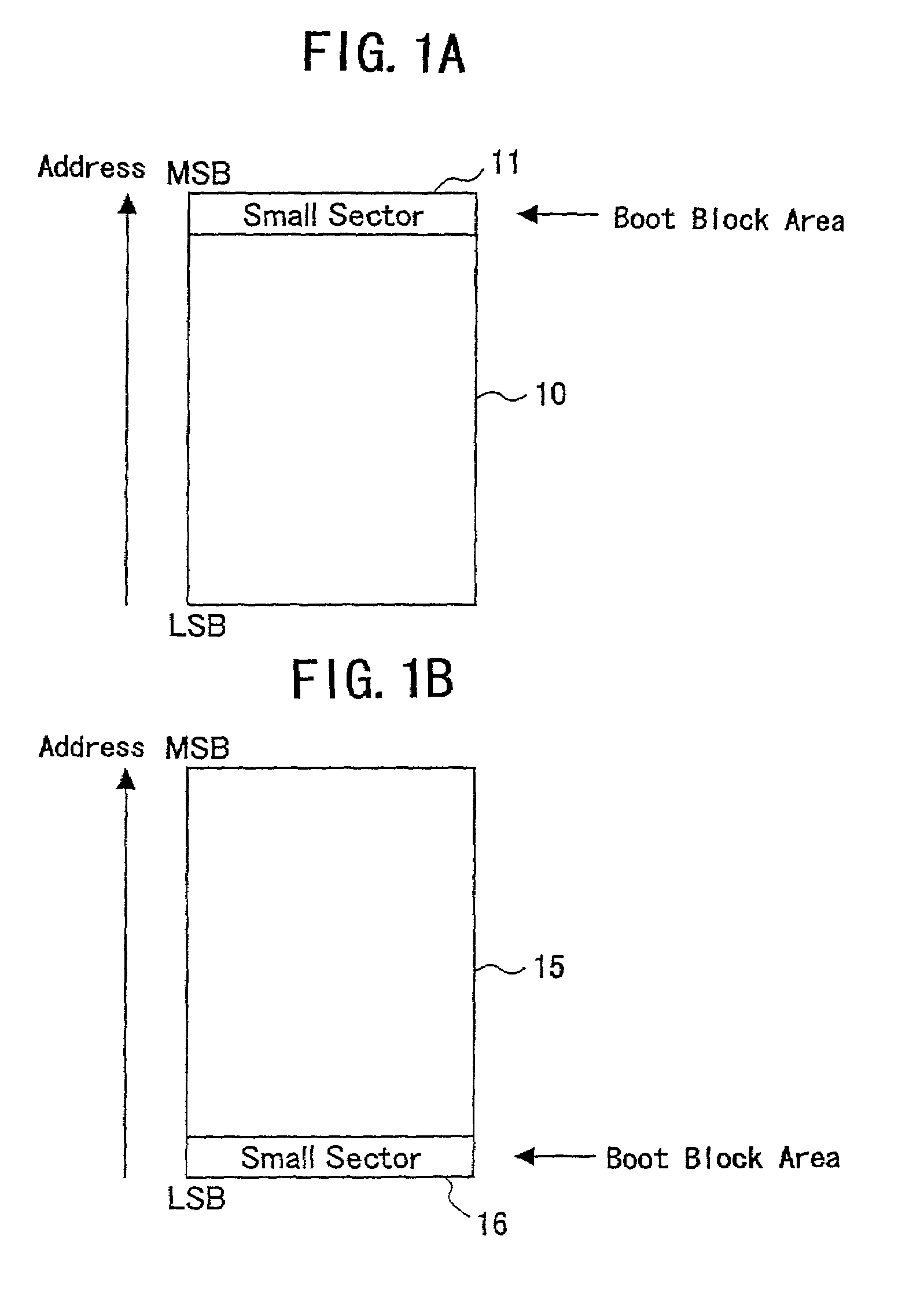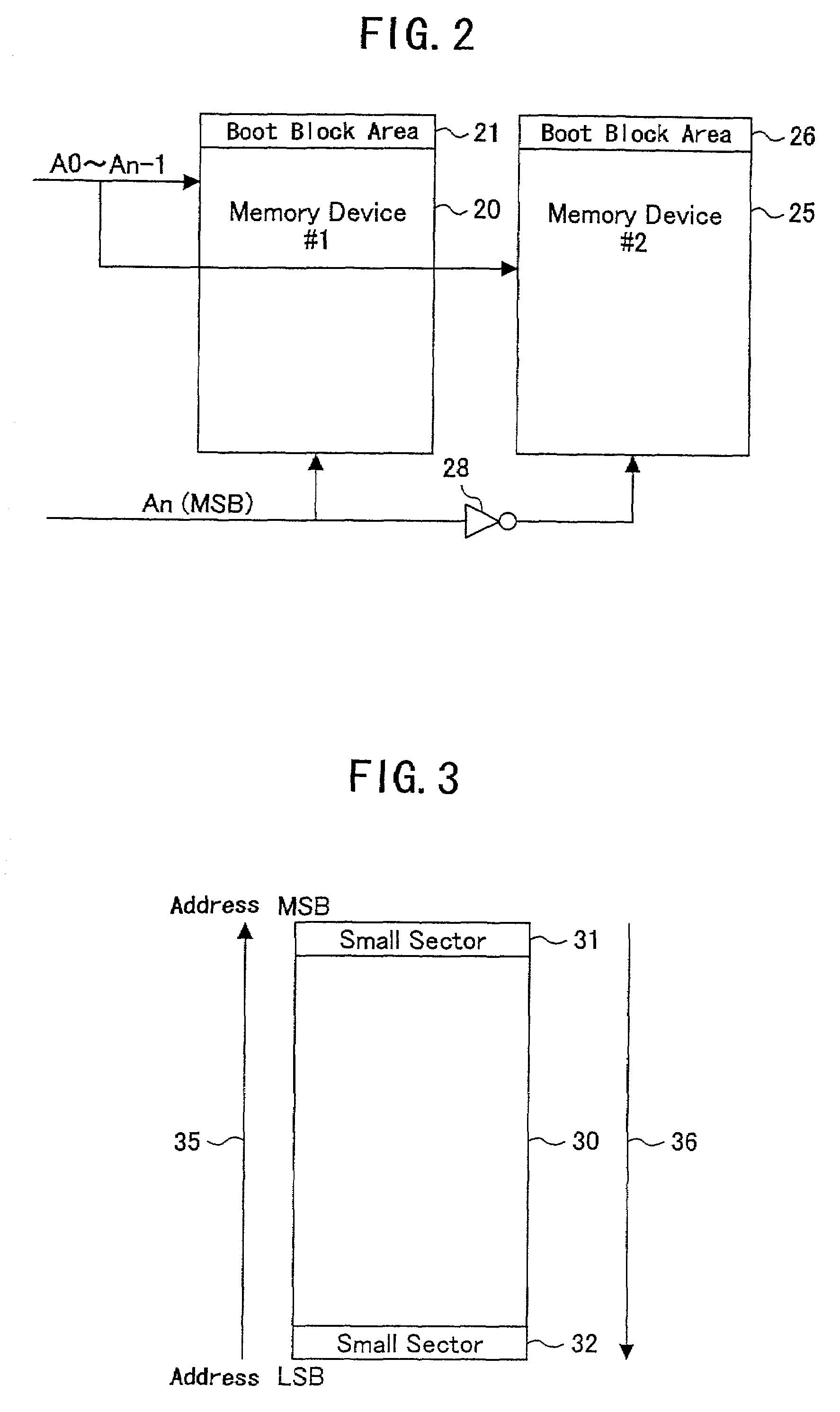Semiconductor memory device, a sector-address conversion circuit, an address-conversion method, and operation method of the semiconductor memory device
a semiconductor memory and sector address technology, applied in the direction of memory address formation, micro-instruction address formation, allocation/relocation, etc., can solve the problems of difficult rewriting of memory devices, and inability to be easily performed
- Summary
- Abstract
- Description
- Claims
- Application Information
AI Technical Summary
Benefits of technology
Problems solved by technology
Method used
Image
Examples
Embodiment Construction
[0041]In the following, an embodiment of the present invention will be described with reference to the accompanying drawings.
[0042]First, the principle of the sector address conversion of the memory device of this invention will be described with reference to FIGS. 4A, 4B and 4C and FIG. 5.
[0043]As shown in FIG. 4A, a sector address from the outside is inputted into a sector-address conversion circuit 40. By the sector-address conversion circuit 40, the address is converted into a sector address of the internal address, and a memory cell array (memory device) is accessed through an address decoder circuit 41.
[0044]The memory device can be accessed from the outside as a top boot type or a bottom boot type memory device as required by the sector-address conversion circuit 40, regardless of whether the memory device is (originally) a top boot type or a bottom boot type.
[0045]The memory device shown in FIG. 4B has two banks 48 and 49, each of which includes a uniform sector 42 and a sma...
PUM
 Login to View More
Login to View More Abstract
Description
Claims
Application Information
 Login to View More
Login to View More - R&D
- Intellectual Property
- Life Sciences
- Materials
- Tech Scout
- Unparalleled Data Quality
- Higher Quality Content
- 60% Fewer Hallucinations
Browse by: Latest US Patents, China's latest patents, Technical Efficacy Thesaurus, Application Domain, Technology Topic, Popular Technical Reports.
© 2025 PatSnap. All rights reserved.Legal|Privacy policy|Modern Slavery Act Transparency Statement|Sitemap|About US| Contact US: help@patsnap.com



